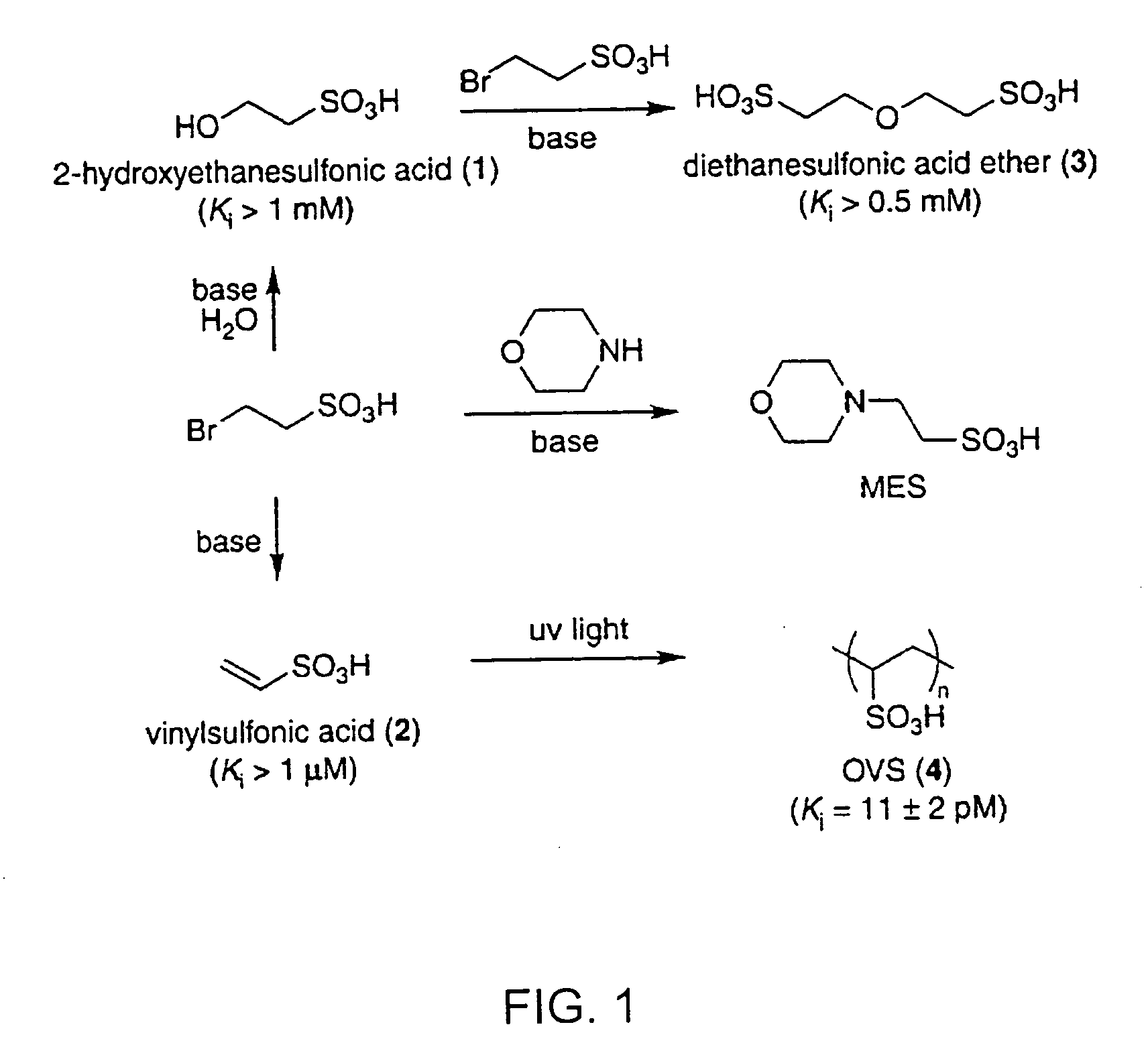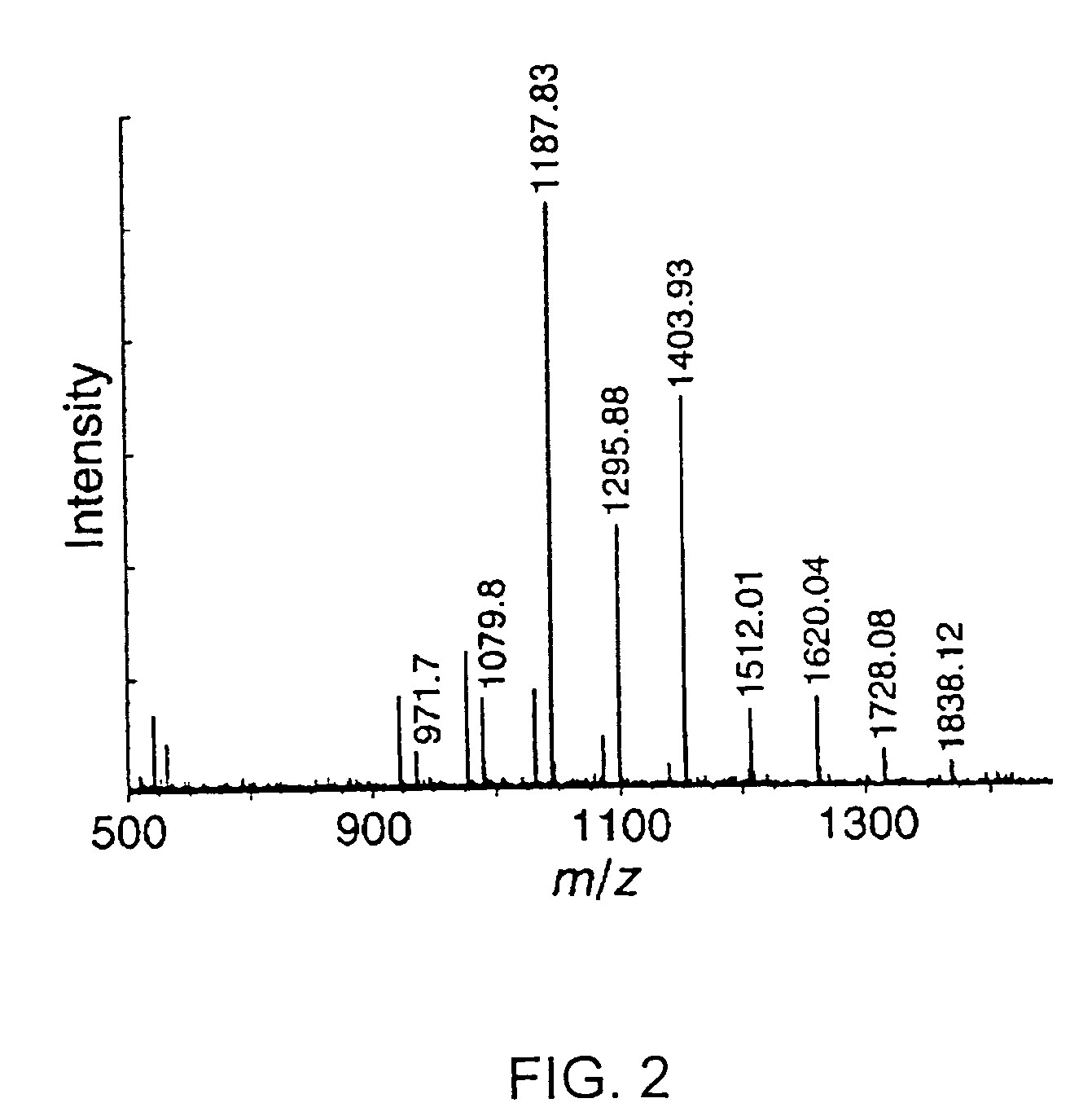Nuclease inhibitors and methods for their use
- Summary
- Abstract
- Description
- Claims
- Application Information
AI Technical Summary
Benefits of technology
Problems solved by technology
Method used
Image
Examples
examples
Materials and Methods:
[0121] Poly(cytidylic acid) (poly(C)) was obtained from Midland Certified Reagents (Midland, TX). Poly(C) was purified prior to use by precipitation in aqueous ethanol (70% v / v). The fluorogenic ribonuclease substrate 6-FAM-dArUdAdA-6-TAMRA (where 6-FAM is a 5′-6-carboxyfluorescein group and 6-TAMRA is a 3′-6-carboxytetramethyl-rhodamine group) was obtained from Integrated DNA Technologies (Coralville, IA). Oligo(vinylsulfonic acid) (Mw˜2,000) and poly(vinylphosphonic acid) (Mr˜20,000) were obtained from Polysciences (Warrington, PA). Vinylsulfonic acid and poly(vinylsulfuric acid) (Mr˜170,000) were obtained from Aldrich. All other commercial chemicals and biochemicals employed were of reagent grade or better and were used without further purification.
[0122] UV absorbance measurements were made with a Cary Model 3 spectrophotometer (Varian, Palo Alto, Calif.). Fluorescence measurements were made with a QuantaMaster 1 photon counting fluorometer equipped with...
PUM
| Property | Measurement | Unit |
|---|---|---|
| Time | aaaaa | aaaaa |
| Biological properties | aaaaa | aaaaa |
| Degradation properties | aaaaa | aaaaa |
Abstract
Description
Claims
Application Information
 Login to View More
Login to View More - Generate Ideas
- Intellectual Property
- Life Sciences
- Materials
- Tech Scout
- Unparalleled Data Quality
- Higher Quality Content
- 60% Fewer Hallucinations
Browse by: Latest US Patents, China's latest patents, Technical Efficacy Thesaurus, Application Domain, Technology Topic, Popular Technical Reports.
© 2025 PatSnap. All rights reserved.Legal|Privacy policy|Modern Slavery Act Transparency Statement|Sitemap|About US| Contact US: help@patsnap.com



